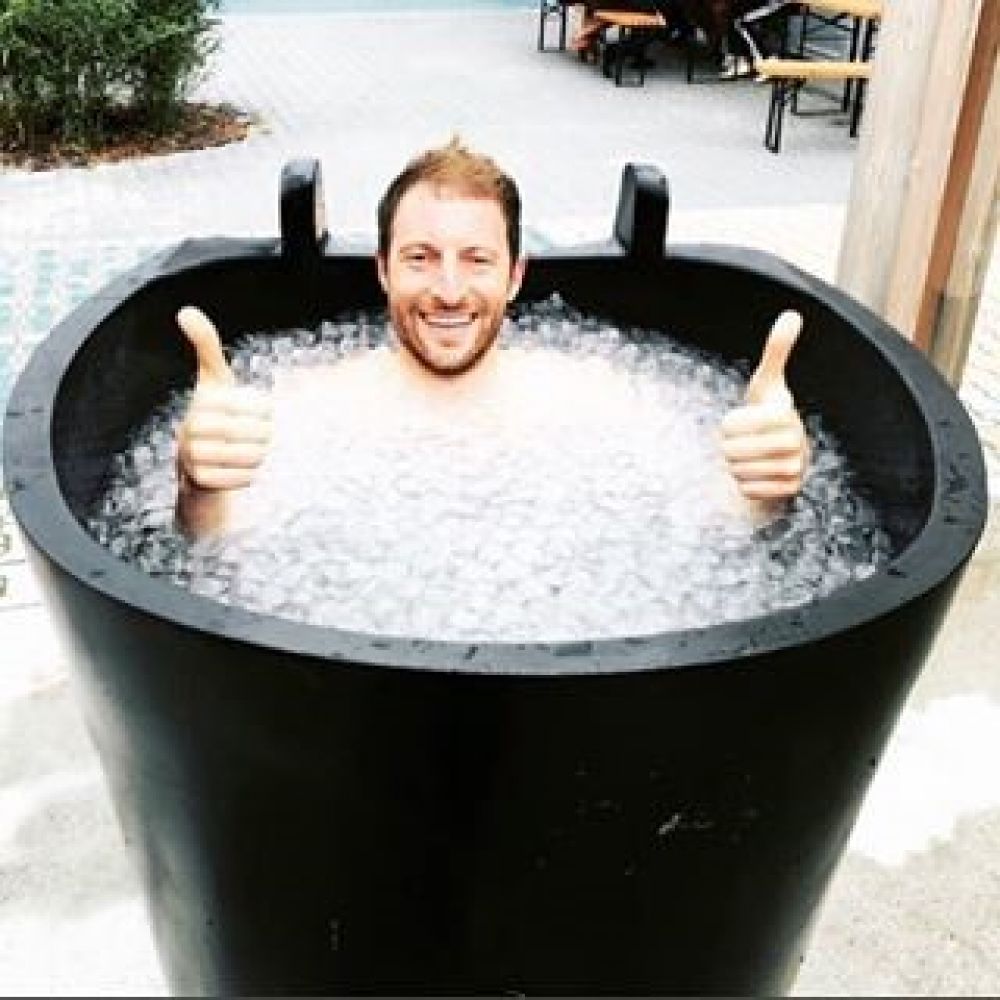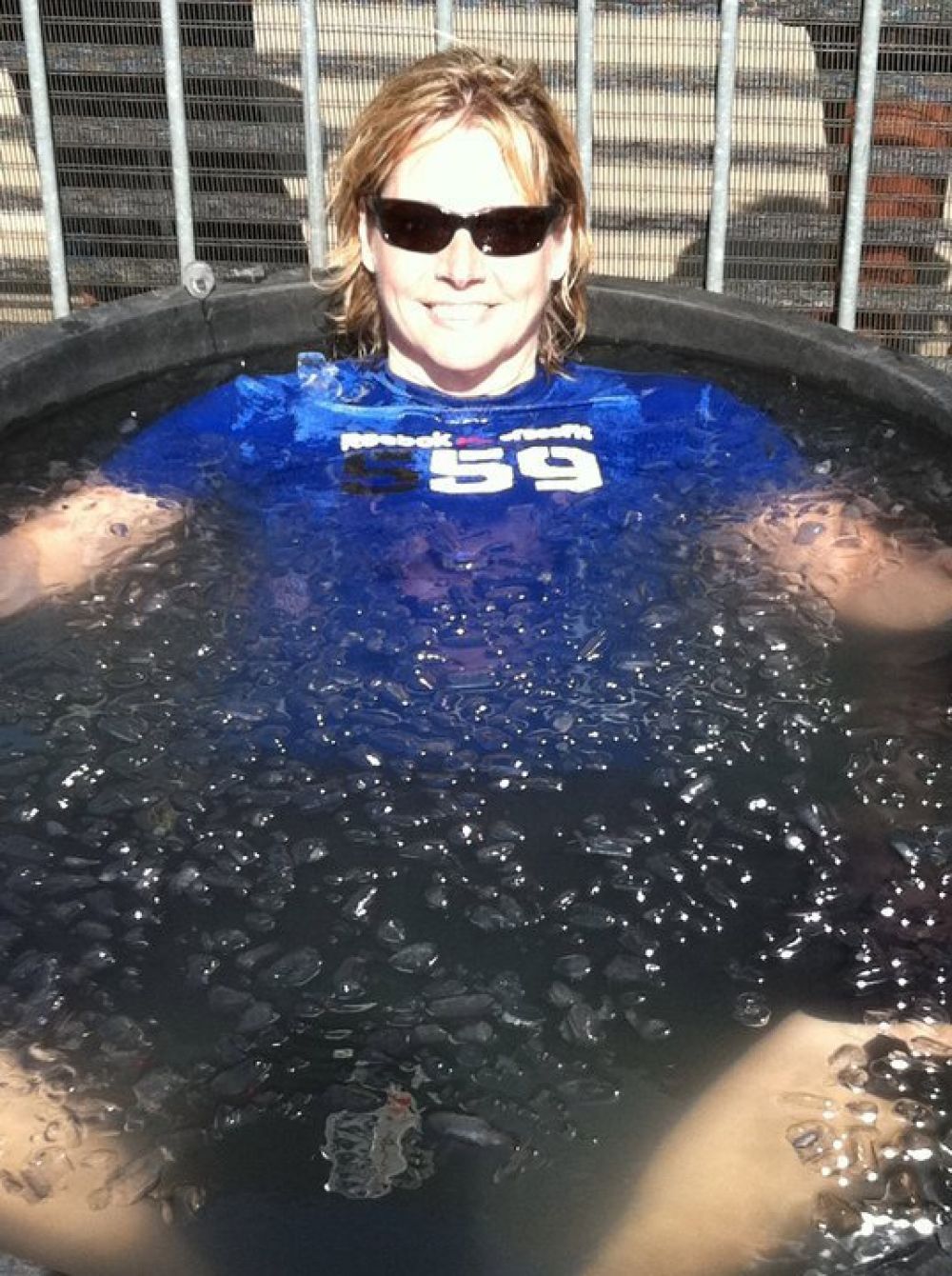Ice bath 101: investigating the therapeutic efficacy of cold therapy
What is an ice bath?
In the world of sports, ice bath therapy, or sometimes cold-water immersion (CWI) or cold therapy or cryotherapy, is a training regimen usually following a period of high-intensity workout or competition, in which a substantial part of a human body (ideally up to your chest), is immersed in a bath of ice or ice-water maintained between 50 to 59 degrees Fahrenheit for a limited duration (approximately 10 to 15-minutes).
The concept of super cooling the entire body for therapeutic reasons started in Japan during the late 1970s, when it was recommended as a potential way to relieve joint pain in patients with multiple sclerosis or rheumatoid arthritis. It then gained traction in western Europe in the 1990s. Only recently, in the past decade, has ice bath risen to prominence in the United States. As the practice has spread, the list of ailments that it can supposedly address has exploded. According to the latest marketing claims, cryotherapy may help with conditions ranging from Asthma to Alzheimer’s disease. Cold is also an important component of the Wim Hof Method, which is applied in the form of cold showers and ice baths. Participants of the WHM report health benefits that range from higher energy levels to relieve of symptoms caused by autoimmune diseases.
While it is becoming increasingly popular and accepted among athletes in a variety of sports as it is believed to help soothe muscle pain and soreness, the method also is quite controversial; with a risk of hypothermia (if you sit for too long) and cold therapy may also hinder muscle gains. “Ice baths have been around for a while, and they’re picking up steam and popularity,” says Nick Clayton, C.S.C.S., program manager for the National Strength and Conditioning Association (NSCA). Although cryotherapy may lower inflammation, they aren’t for everyone— and could be counterproductive depending on our fitness goals.

In this Instagram photo, LeBron James gives a look that’s a cross between a grimace and a snarl. The basketball superstar – currently playing for the Los Angeles Lakers – is submerged waist deep in a bathtub filled with ice cubes.
What are ice baths good for? 5 potential benefits
If you’re wondering why athletes, superstars, and consumers take ice baths, here are some potential benefits that shed light on why subjecting your body to the extreme cold is totally worth it.
1. Improve your mood
According to Dr. A. Brion Gardner, an orthopedic surgeon with The Centers for Advanced Orthopaedics, the greatest benefit of ice baths, most likely, is that they simply make the body feel good. “After an intense workout, the cold immersion can be a relief to sore, aching muscles,” he explains.
2. Helps central nervous system
Ice baths stimulate our sympathetic and parasympathetic nervous system, stress response, and recovery process, all of which contribute to a natural high and boost in mood and attitude. Gardner says cryotherapy can also aid in sleep, and consequently, making you feel better by being less fatigued. Plus, he says it can help improve reaction time and explosiveness in future workouts.
3. Reduces inflammation and prevents tissue breakdown
Decreasing the local temperature after exercise helps limit inflammatory response by changing the way blood and other fluids circulate through your body, thereby decreasing the amount of inflammation and helping us recover faster. “When you sit in cold water, your blood vessels constrict; when you get out, they dilate (or open back up). This process helps flush away metabolic waste post-workout,” says Clayton.
4. Helps stay cool during hot and humid climate
Taking an ice bath may decrease the effect of sultriness. “A CWI prior to a long race in conditions where there is an increase in temperature or humidity can lower core body temperature a few degrees which can lead to improved performance,” explains Gardner.
5. Stimulates our Vagus nerve
The Vagus nerve is an important part of the parasympathetic nervous system, connecting many organs, such as the brain, heart, liver, and gut. Exposing your body to cryotherapy, increases stimulation of the Vagus nerve. While your body adjusts to the cold, sympathetic activity declines, while parasympathetic activity increases.

Image Source: Pride on the Line
Are ice baths dangerous? 5 potential drawbacks
When used improperly or at the wrong time, ice baths may actually have a negative effect on your body. They can:
1. Cause Hypothermia
Any kind of exposure to extreme cold comes with the risk of hypothermia, and ice baths are no exception. According to a 2009 article from Scientific American, “Hypothermia: How long can someone survive in frigid water?”, people submerged in 41℉ can go for 10 to 20 minutes before they start to experience loss of coordination and strength, which is the first sign of hypothermia.
2. Make tight or stiff muscles worse
This is because cold doesn’t relax muscles: instead, it causes muscles to contract. When applied to stiff or tight muscles, it can make your pain worse, especially when applied to a trigger point like the lower back or neck, according to a 2017 article from Pain Science, “The Great Ice vs. Heat Confusion Debacle.”
3. Reduce the efficacy of strength training
In 2015, the Journal of Physiology published an article titled “Post-exercise cold water immersion attenuates acute anabolic signaling and long-term adaptations in muscle to strength training.” In the study, researchers found that ice baths are far from being effective when used after strength training. In fact, they may actually stunt muscle growth.
4. Pose a risk to people with cardiac conditions
Regardless of their potential benefits, ice baths and other types of immediate cold exposure can be risky for those with a heart condition. As we mentioned earlier, cryotherapy can act as a shock to the body and have a marked effect on blood flow. However, this isn’t always a good thing.
A 2014 article from the University of Pittsburgh Medical Center, “How Cold Weather Affects Your Heart and Circulatory System,” explained that since cold constricts blood vessels and reduces blood flow to the arms and legs, it becomes harder for the heart pump blood through those constricted vessels.
5. Be a miserable experience
Immersing yourself in an ice bath — especially too quickly or when the water is lower than 59 degrees — can shock your body, thereby raising blood pressure and heart rate.

Weightlifter Karyn Marshall taking an ice-bath as part of athletic training in July 2011.
Do ice baths really work? Our Conclusion
Conditioning your brain and your body to embrace cold therapy may be challenging, but the health benefits in both the short- and long-run are well worth it. However, please note that ice baths are not meant as a cure to all your ailments and should not be used on a repeated basis. Just like with training, the body is a wonderful machine that will learn to adapt and you will have to increase the stimulus to keep seeing a result.
Ice baths help you recover physically and endure mentally, emotionally and psychologically. If you have access to a cold tub (and you actually enjoy the experience), go ahead and soak a couple of times per month. “It felt good and I’d sleep like a baby that night,” says Clayton. “But if you do it every time after you work out, you won’t maximize the benefits of your workout.”
Please note that people with high blood pressure or cardiovascular disease should check with their doctors first before jumping on CWI bandwagon. As an alternative, there are more pleasant ways to speed up recovery, like massages, light stretching, foam rolling, or dynamic range of motion exercises like yoga — that are as effective as ice baths.
How to take an ice bath?
“The first time you get in, it takes your breath away. It’s quite an experience, but after 5 to 10 minutes it gets easier, especially if you breathe and relax,” says Nick Clayton, “the first few times it’s super uncomfortable and painful, but you do build up a tolerance.”
While ice baths are not exactly pleasant, they are very easy to prepare –
- Buy a few bags of IPIA certified ice from a grocery or convenience store. Read our previous blog to understand why IPIA certified ice is superior.
- Fill the bathtub (or a kiddie pool) halfway up with cold water. The ice will cause the water level to rise when you add it, so you do not want to fill the tub all the way up.
- How cold is an ice bath? Add the ice to the bathtub until the temperature is 55–60 °F (13–16 °C). Use half of the ice first. Dip a thermometer into the water to take the temperature. If the water is too warm, add more ice. If the water is too cold, add some fresh water from the tap.
- Wear shorts (or swimming trunks) to protect sensitive areas. Similarly, use toe warmers or booties made out of wetsuit material to keep your feet from freezing.
- Start by only immersing the lower half of your body. When you first start taking ice baths, do not submerge more than the lower part of your body.
- Submerge other parts of your body if you can stand the cold. If the water is still cold for you, try adding the ice after you get in the bath. This may make it easier for you to adjust to the cold water.
- Simply relax in the bath. The point of an ice bath is to rest your sore muscles, not to clean your body. You might bring a sports drink to rehydrate and replenish electrolytes. Reading a book or calling a friend can help distract you from the cold.
- How long to ice bath? When you first start taking cold water baths, get out after 6 to 8 minutes. Over time, you can slowly increase the length of your cold bath up to 15 minutes. You should never spend more than 20 minutes submerged in a cold bath, as it could affect your muscles and your health.
- What to do after an ice bath? Warm up afterwards by drying off. Use a clean towel to completely dry yourself. Once you are dry, keep yourself warm by wrapping yourself up in a blanket, or sweatshirt. You can even drink a tea, coffee, or hot water with lemon.
- How many ice baths a week? How often should you take ice baths? Studies suggest to save CWI’s for intense training seasons or for particularly difficult training sessions where one might be very sore the next day. So, we would recommend to hop into an ice-cold bath only after an intense workout or game (within 30 minutes or less).
Why not try an ice bath today? Check out our products.
